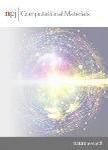Leveraging generative adversarial networks to create realistic scanning transmission electron microscopy images
作者机构:Department of PhysicsUniversity of Illinois Urbana-ChampaignUrbanaIL 61801USA Department of Materials Science and EngineeringUniversity of Illinois Urbana-ChampaignUrbanaIL 61801USA Materials Research LaboratoryUniversity of Illinois Urbana-ChampaignUrbanaIL 61801USA Institute for Condensed Matter Theory and IQUIST and NCSA Center for Artificial Intelligence InnovationUniversity of Illinois Urbana-ChampaignUrbanaIL 61801USA
出 版 物:《npj Computational Materials》 (计算材料学(英文))
年 卷 期:2023年第9卷第1期
页 面:1492-1500页
核心收录:
学科分类:081203[工学-计算机应用技术] 08[工学] 0835[工学-软件工程] 0812[工学-计算机科学与技术(可授工学、理学学位)]
基 金:This work was carried out in part in the Materials Research Laboratory Central Facilities at the University of Illinois Urbana-Champaign This research is also part of the Delta research computing project,which is supported by the National Science Foundation(award OCI 2005572),and the State of Illinois.Delta is a joint effort of the University of Illinois Urbana-Champaign and its National Center for Super-computing Applications
主 题:autonomous adjust network
摘 要:The rise of automation and machine learning(ML)in electron microscopy has the potential to revolutionize materials research through autonomous data collection and processing.A significant challenge lies in developing ML models that rapidly generalize to large data sets under varying experimental *** address this by employing a cycle generative adversarial network(CycleGAN)with a reciprocal space discriminator,which augments simulated data with realistic spatial frequency *** allows the CycleGAN to generate images nearly indistinguishable from real data and provide labels for ML *** showcase our approach by training a fully convolutional network(FCN)to identify single atom defects in a 4.5 million atom data set,collected using automated acquisition in an aberration-corrected scanning transmission electron microscope(STEM).Our method produces adaptable FCNs that can adjust to dynamically changing experimental variables with minimal intervention,marking a crucial step towards fully autonomous harnessing of microscopy big data.



